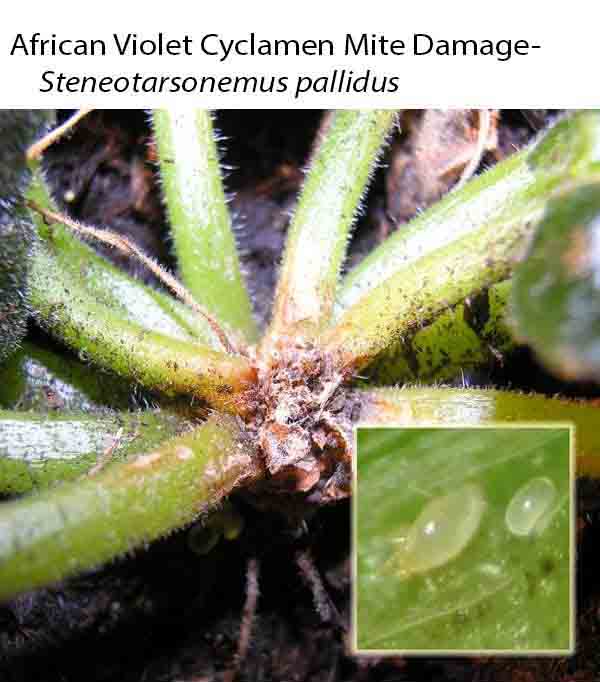Jan. 24, 2022
Arkansas Plant Health Clinic’s updated Plant Disease Image Database now available
By Rebekah Hall
U of A System Division of Agriculture
Fast Facts:
- Improved database is mobile-friendly and easy to use
- Database contains more than 800 disease images
- Access database at uada.edu/yard-garden/plant-health-clinic/
(554 words)
LITTLE ROCK — For Arkansas growers, gardeners, and homeowners, the ability to identify plant health issues is critical to the success of their crop. The Arkansas Plant Health Clinic, located in Fayetteville and supported by the Cooperative Extension Service, serves these growers by providing resources to help solve plant disease problems.
The clinic’s Plant Disease Image Database, an online image library that lists hundreds of plant diseases, has been recently updated by the University of Arkansas System Division of Agriculture’s Information Technology department. The database is now available on mobile devices.
“The database is more modern, and it’s easier to use,” said Karen Watts DiCicco, digital and IT innovation manager for the Division of Agriculture. “You can zoom into the images, and it looks completely different, with a whole new redesign.”
The Plant Health Clinic receives plant samples from every county in Arkansas. Sherrie Smith, plant diagnostician for the clinic, said the clinic also has a permit from the Animal and Plant Health Inspection Service that allows the staff to receive samples from anywhere in the continental United States.
“We look at a wide range of crops, anything from ‘what’s wrong with my lawn’ to ‘what’s wrong with my granny’s rosebush’ to ‘what’s wrong in the soybean field’ from a grower who has 5,000 acres of cropland,” Smith said. “Nearly 50 percent of all our samples these days are ornamental trees and shrubs, because the ornamental business is huge.”
Smith said the clinic receives thousands of plant samples annually, the largest categories of which are ornamental trees and shrubs, fruit and nut trees and vegetables and turf.
DiCicco said the Division of Agriculture’s application development team worked on updating the Plant Disease Image Database over the last few months. It now has 20 plant categories from which a user can choose, and lists 218 unique plants by name, with 824 individual photos in the database. This is because some plants may have several diseases listed, such as the apple, which has 16 disease images, Smith said.
Smith said the database is a useful tool for growers, and she hopes it will direct more people to contact the Plant Health Clinic or their county extension agent.
“Say that a master gardener gets in the database, and they identify a problem that looks like what’s wrong with their iris or their peony based on the picture,” Smith said. “In the database, if you look, it’ll say something like ‘iris bulb mites’ and give a scientific name for the mite. So, if they think that what they’re seeing in the picture looks like the plant, they can research that and get a massive amount of information about that pest and what to do about it. They can also directly contact us here at the clinic with questions about it.”
New entries are added to the database when the Plant Health Clinic finds a previously unlisted disease, and existing entries are updated if the clinic is able to get a better image of the disease.
Smith, who travels around the state with the clinic’s portable lab, said she always encourages people to visit the Plant Disease Image Database and to check out the clinic’s newsletters, which contain details about various plant diseases and how to treat them. Both the database and the newsletter archive can be accessed at uaex.uada.edu/yard-garden/plant-health-clinic/.
To learn about extension programs in Arkansas, contact your local Cooperative Extension Service agent or visit www.uaex.uada.edu. Follow us on Twitter and Instagram at @AR_Extension. To learn more about Division of Agriculture research, visit the Arkansas Agricultural Experiment Station website: https://aaes.uark.edu. Follow on Twitter at @ArkAgResearch. To learn more about the Division of Agriculture, visit https://uada.edu/. Follow us on Twitter at @AgInArk.
About the Division of Agriculture
The University of Arkansas System Division of Agriculture’s mission is to strengthen agriculture, communities, and families by connecting trusted research to the adoption of best practices. Through the Agricultural Experiment Station and the Cooperative Extension Service, the Division of Agriculture conducts research and extension work within the nation’s historic land grant education system.
The Division of Agriculture is one of 20 entities within the University of Arkansas System. It has offices in all 75 counties in Arkansas and faculty on five system campuses.
Pursuant to 7 CFR § 15.3, the University of Arkansas System Division of Agriculture offers all its Extension and Research programs and services (including employment) without regard to race, color, sex, national origin, religion, age, disability, marital or veteran status, genetic information, sexual preference, pregnancy or any other legally protected status, and is an equal opportunity institution.
# # #
Media contact: Rebekah Hall
rkhall@uada.edu
@RKHall_
